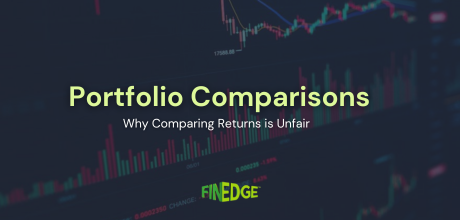What is an Equity Mutual Fund?

Despite the stock markets predominantly declining since the Union Budget on 31st January, net inflows into Equity mutual fund (MF) schemes continued to remain strong last month. According to data from AMFI, Equity funds (including ELSS) witnessed monthly net inflows of Rs. 16,268 crore in February ‘18, up 5.7% month on month, and more than 150% on a year on year basis. The increase was mainly driven by sustained inflows through Systematic Investment Plans (SIPs). According to data from AMFI, the cumulative SIP contribution has been Rs. 53,646 crore so far in FY2018.
Equity Mutual Funds are a type of Mutual Fund investment, in which the fund manager specifically invests more than 80% of the fund’s portfolio into equity shares of listed companies. Because equity shares tend to be volatile, Equity Mutual Funds are inherently a high-risk proposition, with the potential to create long-term wealth for investors.
Are All Equity Mutual Funds the same?
Equity Mutual Funds have several sub categories, and they differ from each other in two ways – first, in terms of the size of the companies they invest into and second, in terms of the sectors or ‘themes’ they focus on.
Post SEBI's diktat on scheme consolidation for the fund industry, Association of Mutual Funds in India, the mutual fund apex body, has issued a list of ranked stocks based on their market capitalization. According to AMFI, large cap stocks are the Top 100 companies by full market capitalisation, while the universe of mid cap stocks comprise the next 150 companies in the ordered list. Small cap stocks would consist of those stocks beyond the top 250 companies in terms of full market capitalization. AMFI has ranked close to 5,250 listed stocks – 100 as large caps, 150 as mid-caps and the rest as small caps.
Large Cap Equity Funds, as can be inferred from the preceding paragraph, will restrict their holdings to the Top 100 companies in the list – and will therefore be a lot more stable than mid/small cap-oriented equity mutual funds. However, mid/ small cap-oriented funds also have the potential to grow faster, especially during secular bull markets.
Sectoral &Thematic Funds
There are some equity mutual funds that invest into stocks of companies from one specific sector only (such as Banking, IT or Pharma, for example). These mutual funds are known as ‘sectoral’ funds, and are obviously higher risk in nature because they are less diversified, and hence exposed to a higher degree of sector-specific risk. Thematic Funds (such as Infrastructure Funds) are less restricted in their sectoral spread, but also tend to be higher risk propositions because the factors that influence stock prices of companies within a particular theme tend to overlap.
Guidelines for Equity Mutual Fund Investing
Follow a few basic guidelines for successful equity mutual fund investing. First and foremost, expect volatility and do not expect to see linear returns. Invest for the long term and do not churn in and out of funds frequently – follow a core and satellite strategy. Third, invest via the SIP (Systematic Investment Plan) route if you can, as the rupee cost averaging benefits will absorb a lot of the risk associated with equity mutual fund investing.
Your Investing Experts
Relevant Articles
From Coffee to Crorepati: Small Lifestyle Tweaks Gen Z Can Make to Start Investing Early
Gen Z is often told to “stop buying coffee” if they want to invest. But that misses the point. Building wealth isn’t about sacrificing everything you enjoy. It’s about understanding how small, everyday decisions shape long-term habits. Starting early even with modest amounts can quietly make a meaningful difference over time.
Why Comparing Investment Returns Can Be Misleading
At some point, most investors have compared their investment returns with a friend, a colleague, or a number they saw online and wondered why their outcomes looked different. While this instinct is natural, return comparisons are often incomplete and, in many cases, misleading. Understanding why returns differ is far more important than comparing the numbers themselves.
CAGR vs XIRR vs Absolute Return: Understanding Which Return Really Matters
When reviewing investment performance, investors often come across multiple return figures absolute return, CAGR, and XIRR. While these numbers may appear similar, they measure performance very differently. Understanding what each metric represents, and when to use it, is essential for making informed investment decisions and setting realistic expectations.
.png)
.png)

.png)